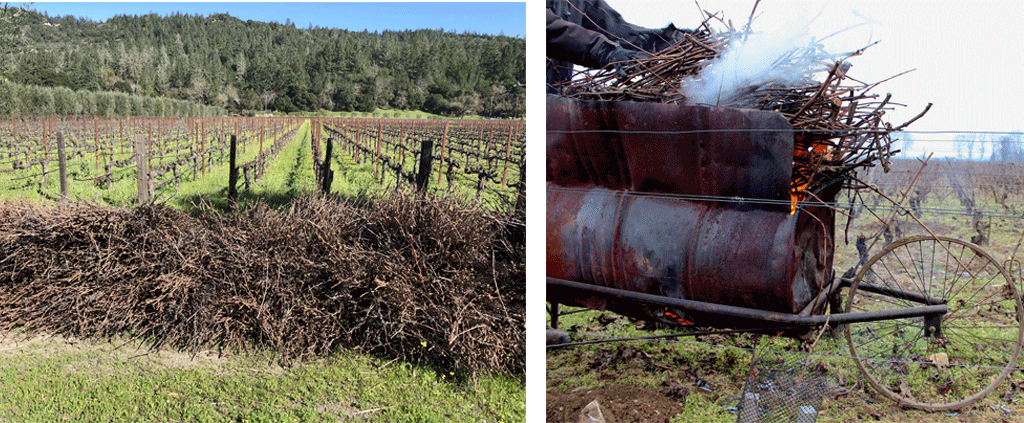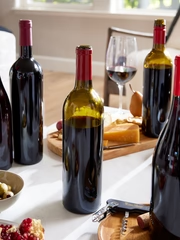 During the pruning is the best time to evaluate the health and status of the plants and also the microbial population of the soil. Detecting fungal species that cause diseases such as Esca, Eutypa or Black Foot and preventing their effects is the primary goal. The study of the microbial population of a vineyard can reveal deficiencies in plant development.
[caption id="attachment_16726" align="alignnone" width="752"]
During the pruning is the best time to evaluate the health and status of the plants and also the microbial population of the soil. Detecting fungal species that cause diseases such as Esca, Eutypa or Black Foot and preventing their effects is the primary goal. The study of the microbial population of a vineyard can reveal deficiencies in plant development.
[caption id="attachment_16726" align="alignnone" width="752"] Healthy tissue (pictured left). Wood disease (pictured right).[/caption]
Weakness in a vineyard allows many diseases to propagate more easily, including dark spots in the wood, incomplete flowering, Millerandage (grape bunches that contain berries that differ greatly in size and maturity), mildew and gray rot.
The vineyard disease cycle always follows the same course. The fungus survives in infected trunks for long periods of time. (The fungus is generally present in older wood, such as vine trunks but generally not in younger wood.) The fungus eventually produces reproductive structures on the surface of the infected wood. Those spores are produced within these structures and then finally discharged into the air to spread further.
Healthy tissue (pictured left). Wood disease (pictured right).[/caption]
Weakness in a vineyard allows many diseases to propagate more easily, including dark spots in the wood, incomplete flowering, Millerandage (grape bunches that contain berries that differ greatly in size and maturity), mildew and gray rot.
The vineyard disease cycle always follows the same course. The fungus survives in infected trunks for long periods of time. (The fungus is generally present in older wood, such as vine trunks but generally not in younger wood.) The fungus eventually produces reproductive structures on the surface of the infected wood. Those spores are produced within these structures and then finally discharged into the air to spread further.
 The primary control method to combat disease and fungus is the removal of infected trunks from the vineyard. They are destroyed (either buried or burned) before the fungus spreads extensively in the infected vine. Burnt vines actually add minerals back to the soil as the ashes fall down, making burning a popular choice for this practice.
Sometimes the removal and replacement of entire sections of vines is necessary. An old infected stump left above the soil or a trunk lying on the ground may continue to produce spores for several years. The spring is a good time to locate and mark the diseased vines.
The primary control method to combat disease and fungus is the removal of infected trunks from the vineyard. They are destroyed (either buried or burned) before the fungus spreads extensively in the infected vine. Burnt vines actually add minerals back to the soil as the ashes fall down, making burning a popular choice for this practice.
Sometimes the removal and replacement of entire sections of vines is necessary. An old infected stump left above the soil or a trunk lying on the ground may continue to produce spores for several years. The spring is a good time to locate and mark the diseased vines.
 ATVs are used in most vineyards around this time of year to avoid compaction of the top soil and the asphyxia of the small roots within 1 foot of the surface.
Spring is almost upon us. With vineyards well-pruned and clear of unwanted wooden debris, we should be ready for a great 2018 vintage in our Californian vineyards.
ATVs are used in most vineyards around this time of year to avoid compaction of the top soil and the asphyxia of the small roots within 1 foot of the surface.
Spring is almost upon us. With vineyards well-pruned and clear of unwanted wooden debris, we should be ready for a great 2018 vintage in our Californian vineyards.





